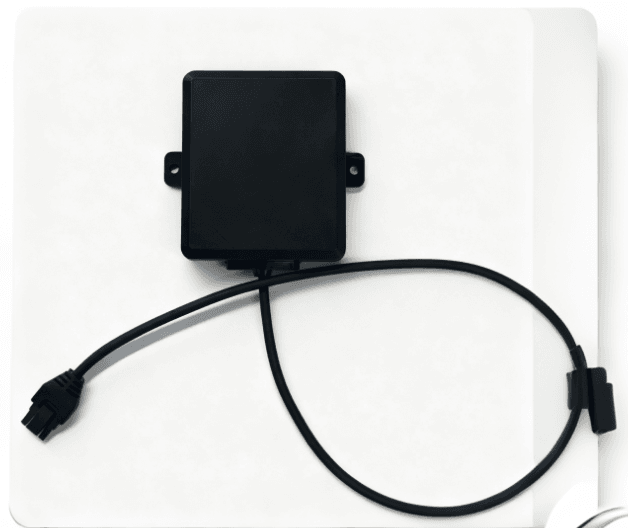In modern industrial and logistics environments, it is increasingly common to deploy multiple millimeter-wave radars in close proximity—whether monitoring several silos, vehicles, or robotic arms simultaneously. However, as the number of radars grows, the challenge of signal interference becomes significant. Multiple radars transmitting and receiving at the same time can cause signal collisions, false echoes, and range inaccuracies.
To ensure that multiple radars operate reliably, engineers must implement a combination of frequency planning, time-division scheduling, signal processing, hardware optimization, and multi-node coordination.
For practical applications in industrial automation, see Linpowave Industry Solutions, which integrate multiple radar sensors in complex layouts with proven stability.
Understanding the Source of Radar Interference
Interference occurs when two or more radars operate in overlapping frequency bands and transmit chirps simultaneously. The resulting crosstalk can manifest as unstable measurements, sporadic range shifts, or phantom targets.
Millimeter-wave radars, such as those operating in the 76–81 GHz FMCW band, are especially sensitive because even minor overlaps in frequency or timing can result in significant signal degradation. According to IEEE studies (IEEE Xplore), radar interference increases sharply when frequency offsets fall below 100 MHz or when multiple devices share the same time window.
In real-world industrial environments, reflective surfaces like metal silos, conveyors, or tanks amplify interference. In these scenarios, relying on a single mitigation technique is often insufficient; a multi-layered strategy is required.
1. Frequency Division: The First Line of Defense
Frequency separation is the most straightforward method for preventing interference. By allocating each radar a distinct portion of the spectrum, devices avoid transmitting on overlapping channels. For example, in a system with four radars:
-
Radar A operates at 77.0–77.5 GHz
-
Radar B operates at 77.5–78.0 GHz
-
Radar C at 78.0–78.5 GHz
-
Radar D at 78.5–79.0 GHz
This approach ensures that signals from neighboring devices do not interfere with each other’s echoes. For more technical reference, see ETSI EN 301 091-1 for frequency and power regulations in the 76–81 GHz band.
In industrial installations, such as multiple silos or compact robotic cells, frequency division alone can significantly reduce phantom targets. Linpowave radar systems leverage this principle in their multi-sensor solutions to ensure stable operation even when sensors are mounted within one meter of each other (Linpowave Industry Solutions).
2. Time-Division Scheduling: Coordinated Transmission Windows
When spectrum is limited or radar density is high, time-division multiplexing (TDM) is crucial. In this method, each radar is assigned a specific time slot for transmitting chirps while other devices remain in idle or receive mode.
For example, in a four-radar configuration:
-
Radar A transmits during slot 1
-
Radar B transmits during slot 2
-
Radar C transmits during slot 3
-
Radar D transmits during slot 4
The system repeats the cycle, ensuring no two radars transmit simultaneously. With proper synchronization, even high-density networks can coexist without significant interference.
Advanced radars use master-slave timing control to maintain microsecond-level alignment between devices. National Instruments and Keysight Technologies provide testing platforms that validate this approach in laboratory and field scenarios (Keysight Radar Test Solutions).
3. Signal Processing: Adaptive Algorithms to Suppress Crosstalk
Even with frequency and time separation, residual interference may occur due to reflections, side lobes, or environmental noise. Signal processing plays a critical role in interference mitigation.
Dynamic frequency hopping allows the radar to switch to cleaner sub-bands when interference is detected. Some systems also implement phase or frequency randomization to spread residual crosstalk across the Doppler spectrum, reducing the signal-to-noise ratio of phantom targets.
Algorithms such as weighted normalization, sliding-window filtering, and linear interpolation further enhance stability by eliminating side lobes or corrupted echoes. While these algorithms increase computational load, they are essential for high-precision scenarios, such as tank level monitoring or conveyor belt object detection.
For technical references, see IEEE Transactions on Microwave Theory and Techniques.
4. Hardware Design: Polarization and Waveform Differentiation
Antenna polarization is an effective physical method to reduce interference. By using orthogonal polarization—horizontal transmit and vertical receive—radars can suppress cross-talk by approximately 10 dB. This requires careful design of antenna arrays but is particularly effective in fixed installations.
Waveform differentiation leverages MIMO technology to create narrow, focused beams. Narrow beams reduce the probability of receiving side-lobe interference from adjacent radars. Additionally, slightly varying the chirp slopes across radars further lowers crosstalk risk.
These methods are implemented in next-generation 4D imaging radars, enabling simultaneous operation of dozens of sensors without degrading measurement accuracy.
5. Multi-Radar Coordination and Self-Adaptive Networks
The most advanced approach involves autonomous radar coordination. In multi-node networks, each radar continuously monitors the environment and neighboring devices, dynamically adjusting its transmission schedule, power, and frequency.
Key strategies include:
-
Priority-based access: High-priority radars can instruct lower-priority devices to shift frequency or time slot.
-
Open RF architecture: Enables real-time assignment of resources to optimize spectrum usage.
-
Environmental learning: Radars track interference events over time, adapting operation to avoid high-risk zones.
Linpowave radar systems incorporate these principles in industrial and logistics environments, allowing multiple sensors to operate in parallel without human intervention (Linpowave Industry Solutions).
6. Real-World Performance and Case Studies
-
TI Multi-Radar Deployment: Frequency separation and phase dithering reduced interference noise by 24 dB at 1 meter. Phantom targets were reduced by up to 90%.
-
Alps Phase Disturbance Strategy: Completely eliminated false Doppler targets, improving detection confidence.
-
High-Resolution 4D Imaging: 12T24R MIMO arrays achieve 0.1° angular resolution, distinguishing real targets from dense interference clouds.
These results highlight that proper frequency planning, algorithmic mitigation, and adaptive coordination are not just theoretical—they work in practical industrial environments.
Summary
Multi-radar systems require a multi-layered approach to prevent interference:
-
Frequency planning ensures no overlapping channels.
-
Time-division scheduling prevents simultaneous transmissions.
-
Signal processing algorithms suppress residual crosstalk.
-
Hardware optimization, such as polarization and waveform differentiation, adds physical separation.
-
Self-adaptive radar networks enable real-time coordination.
These strategies collectively ensure reliable operation in dense, reflective, or high-interference industrial environments. With the rise of 4D imaging and multi-sensor fusion, multi-radar interference will become increasingly manageable and predictable.
For more information on multi-radar industrial solutions, visit Linpowave Industry Solutions.
FAQ
Q1: Can two radars in the same 80 GHz band interfere with each other?
A: Yes, if their chirps overlap in time or frequency. Frequency separation or time-division scheduling is recommended.
Q2: What is the minimum safe distance between two radars?
A: Depending on antenna beamwidth and power, ≥0.5 m is typically safe for industrial 80 GHz radar sensors.
Q3: How does Linpowave handle multi-radar interference?
A: Adaptive frequency hopping and multi-node coordination ensure stable operation even in compact layouts.
Q4: Do reflective surfaces increase interference risk?
A: Yes. Proper mounting angles, frequency isolation, and beam shaping are critical.



